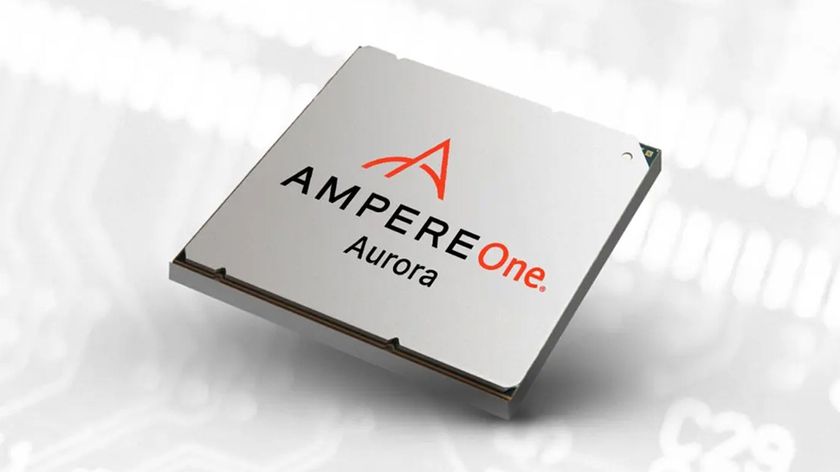Intel Iris Xe Max GPU is launched, helping thin laptops deliver impressive gaming
Intel’s new discrete GPU easily beats Nvidia’s MX350 in some games

Intel has officially launched its Iris Xe Max discrete graphics card for laptops (previously known as DG1), revealing the full details of the GPU and how it performs with 1080p gaming – and how it leverages tech to make a powerful combination with Intel CPUs that have integrated Xe graphics.
Intel Iris Xe Max boasts 96 EUs (Execution Units) and it’s clocked at 1.65GHz, supporting LPDDR4x graphics memory, with initial laptops loaded with 4GB of the stuff (with a memory bandwidth of 68GB/s).
- Best laptop games: 20 titles that won't melt your machine
- Best 17-inch laptop: top large screen laptops for your money
- Check out all the best processors
Those initial laptops – which will be available from today – include the Acer Swift 3x, and the Asus VivoBook Flip TP470, alongside the Dell Inspiron 15 7000 2-in-1. All of these notebooks have not just Intel Iris Xe Max GPUs, but Tiger Lake 11th-gen mobile CPUs with Xe integrated graphics – and both Xe graphics solutions can work in tandem with a new feature Intel is calling Deep Link.
Deep Link refers to the way in which these Xe-toting CPUs and GPUs are, well, linked together in order to maximize performance, and how power usage can be adjusted between the processor and graphics card.
Deep Link’s dynamic power sharing means that when the GPU isn’t in use, that power can be piped to the CPU instead, offering up to a 20% performance boost for the processor versus a laptop with an Nvidia MX350 GPU, Intel claims.
Deep Link promises a major boost in content creation workloads, and also with video encoding. We’re talking 7x faster AI-based creation (again compared to a laptop with a similar CPU but Nvidia MX350 graphics) according to Intel’s testing, and encoding is almost 1.8x faster than RTX 2080 graphics, no less.
Game on
But what about games? Intel’s Iris Xe Max makes a good fist of 1080p gaming on thin-and-light laptops, generally outperforming an MX350-equipped notebook – and in some games, beating the Nvidia chip by a fair way.
Get daily insight, inspiration and deals in your inbox
Sign up for breaking news, reviews, opinion, top tech deals, and more.
Intel’s benchmarking indicated a big win for Iris Xe Max in Metro Exodus, with the GPU hitting around 42 frames per second (fps), compared to around 29 fps for the MX350. GRID 2019 managed around 46 fps with Intel, compared to 37 fps for the MX350, but the other games tested were pretty much a dead heat (Gears Tactics, Hitman 2, The Witcher 3).
And in Borderlands 3, the MX350 was actually slightly ahead, but only by a few frames per second – nothing that you’d realistically notice.
Going by Intel’s testing, it would seem that Iris Xe Max is the equal of Nvidia’s MX350, and actually outguns the latter considerably in a couple of titles, which is pretty impressive. Nvidia’s MX350 might be its entry-level GPU for laptops, but it is the most recent model from 2020 (albeit based on Pascal tech, two generations away from Ampere now).
All of those 1080p game benchmarks were conducted with either medium or low graphics details, incidentally. Of course, we have to bear in mind that these are Intel’s own internal tests, which could be cherry-picked to an extent, and we’ll want to do our own testing to gauge the power of Iris Xe Max graphics to get the full picture of gaming performance.
In its announcement, Intel also revealed that an Xe-LP graphics card will be coming to value desktops in the first half of 2021 – meaning a DG1 for budget desktop PCs. Furthermore, the chip giant told us that Xe-HPG, the heavyweight gaming card which was officially powered on recently, will be out in 2021 as expected (not likely until the end of the year, though).
- These are the best graphics cards
Darren is a freelancer writing news and features for TechRadar (and occasionally T3) across a broad range of computing topics including CPUs, GPUs, various other hardware, VPNs, antivirus and more. He has written about tech for the best part of three decades, and writes books in his spare time (his debut novel - 'I Know What You Did Last Supper' - was published by Hachette UK in 2013).













